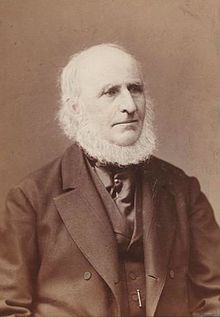5th Symphony (Tchaikovsky)

The Russian composer Pyotr Ilyich Tchaikovsky wrote his Symphony No. 5 in E minor, Op. 64, in 1888. Although Tchaikovsky, ten years after the previous fourth symphony , expressed fears to his pen friend and patron Nadezhda von Meck that he had "written out", he wrote his 5th symphony within a few weeks in his country house Frolowskoje near Klin . The premiere took place under the direction of its composer on November 17, 1888 in Saint Petersburg . The symphony is dedicated to Theodor Avé-Lallemant .
To the music
instrumentation
- 3 flutes including piccolo
- 2 oboes
- 2 clarinets in A
- 2 bassoons
- 4 horns in F
- 2 trumpets in A
- 3 trumpets
- 1 bass tuba
- Timpani in GDE
- Strings ( violins 1 + 2, viola , cello , double bass )
Sentence names
- Movement: Andante - Scherzo. Allegro con anima - Molto più tranquillo
- Movement: Andante cantabile, con alcuna licenza - Non allegro - Andante maestoso con piano
- Movement: Waltz. Allegro moderato
- Movement: Finale. Andante maestoso (con fiamma) - Non allegro - Presto molto furioso - Molto assai e molto maestoso - Allegro vivace
analysis
A common theme runs through the sentences, the motif of fate.
Tchaikovsky wrote of the program for the first movement: “Introduction. Total surrender to fate, or, what is the same, to the unfathomable counsels of Providence. - Allegro: grumbling, doubts, complaints, reproaches. ”The movement begins with a deliberate clarinet melody that represents the symphony's fateful theme. The melody leads over to the more energetic main theme of the movement, initiated by flutes and clarinets and taken over by the strings. The second main theme of the movement is intoned by the woodwinds with the occasional interference of the leitmotif.
The second movement, in the context of which Tchaikovsky asked if he should “throw himself into the arms of faith”, begins with a deep introduction by the strings, before a horn solo begins on the cantable main theme of the movement, which Tchaikovsky called the “ray of light” and finally is supported by clarinet and oboe. With this theme Tchaikovsky was obviously inspired by Joachim Raff's 10th symphony “Zur Herbstzeit”, in the third movement of which it sounds almost identically on the horn. The main theme of this second movement is only briefly interrupted by the thundering motif of fate.
The third movement is written in the style of a quiet waltz. He too is only briefly disturbed by the motive of fate.
Like the first movement, the fourth movement begins with the fate motif, which this time appears more clearly, especially in major. After a detailed introduction to the finale, it turns into a solemn eruption of the orchestra, which it continues, occasionally accompanied by the motif of fate, until the end of the finale.
effect
While the premiere was still moderate, the critic Josef Sittard found the symphony to be one of the “most important musical phenomena of our time”. Tchaikovsky described his fifth symphony as a “unsuccessful work” (mainly because of the finale) and even rated the preceding fourth symphony higher. Today, however, Tchaikovsky's fifth and fourth and sixth symphonies are among Tchaikovsky's most popular symphonies.
Adaptations
The finale of the symphony at the end of the DEFA film The Council of Gods is used to underline the people's victory in the struggle for peace.
Web links
- 5th Symphony (Tchaikovsky) : Sheet music and audio files in the International Music Score Library Project